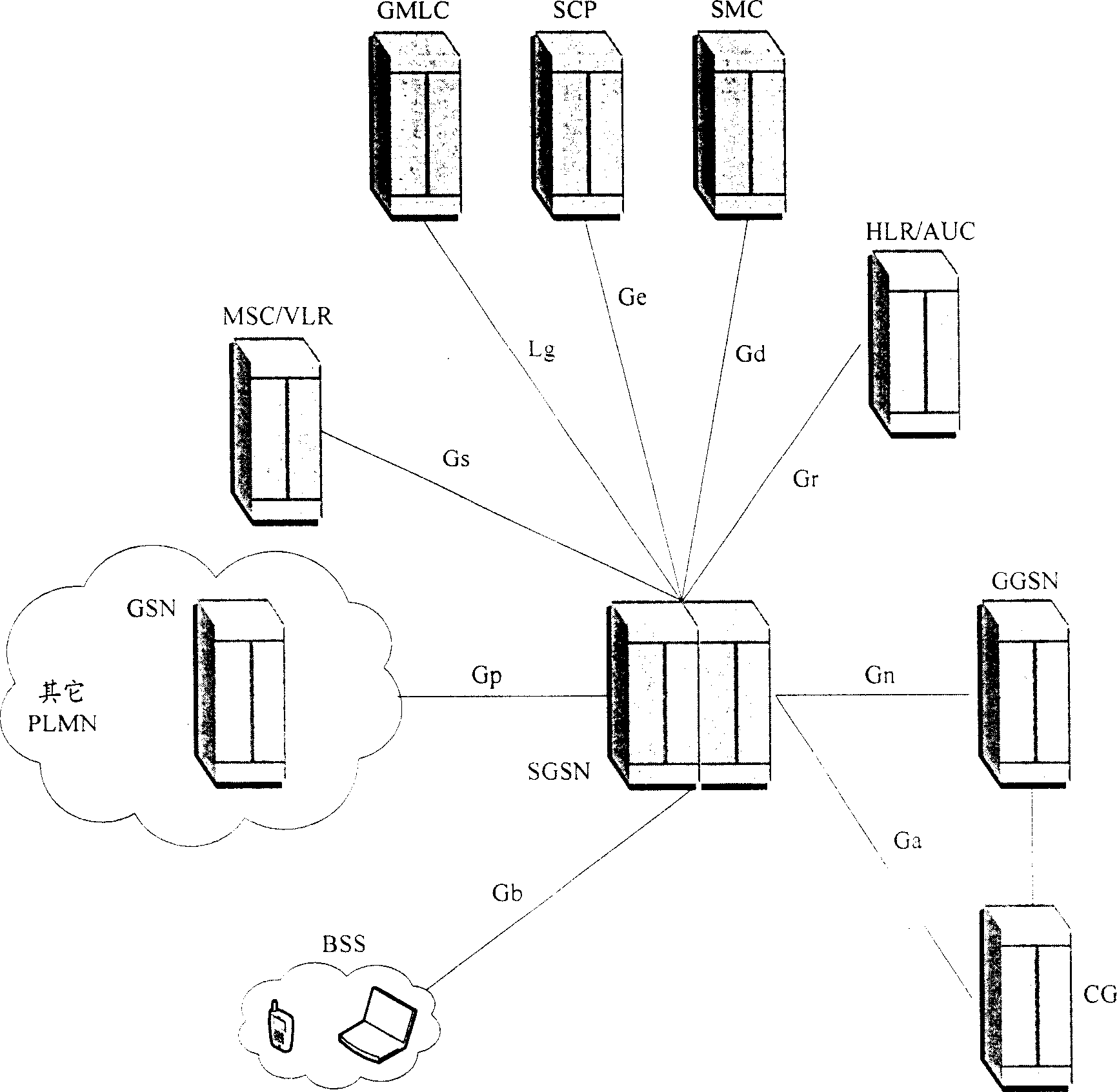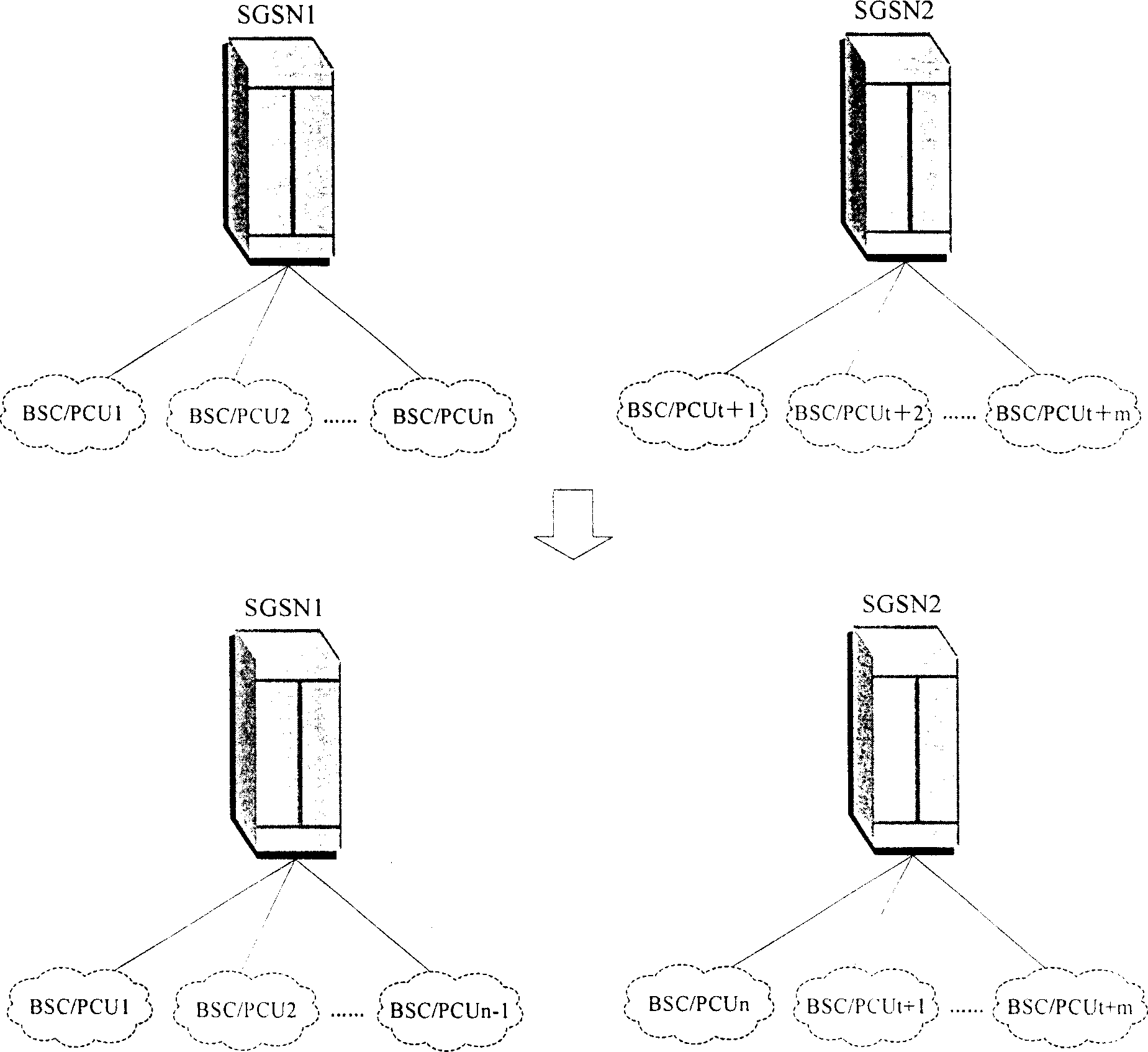Method for supporting node route domain updation in universal wireless group service
A routing area and update request technology, which is applied in radio/inductive link selection and arrangement, wireless communication, electrical components, etc., can solve the problems of heavy burden of signaling traffic, affecting GPRS system performance, and low success rate of Intra-SGSNRAU, etc. Achieve the effect of improving overall performance, shortening unstable time, and avoiding continuous retransmission
- Summary
- Abstract
- Description
- Claims
- Application Information
AI Technical Summary
Problems solved by technology
Method used
Image
Examples
Embodiment 1
[0081] Embodiment 1: Introduce the LLC RESET process into the simple Intra-SGSN RAU process after the cutover of the existing BSC / PCU.
[0082] Such as Figure 6 As shown, this embodiment is in Figure 4 Added LLC RESET process on top of . At this time, the Intra-SGSN RAU process after BSC / PCU cutover includes the following steps:
[0083] Description and processing methods of steps 601-605 and Figure 4 The description and processing methods of steps 401 to 405 in the shown method are completely the same.
[0084] Step 606. The SGSN sends an LLGMM-RESET-REQ message to the MS to negotiate parameters with the MS.
[0085] In this step, the SGSN prompts the MS to set V(U) and V(UR) to the initial value 0 by sending the LLGMM-RESET-REQ message.
[0086] Steps 607-610. The SGSN sends a RAU Reject message to the MS, and adds 1 to the number of Intra-SGSNRAU failures; the MS starts the attach process after sending the LLGMM-RESET-CNF message to the SGSN.
[0087] In this embod...
Embodiment 2
[0091] Embodiment 2: Introduce the LLC RESET process in the improved Intra-SGSN RAU process after the cutover of the existing BSC / PCU.
[0092] Such as Figure 7 As shown, this embodiment is in Figure 5 Added LLC RESET process on top of . At this time, the Intra-SGSN RAU process after BSC / PCU cutover includes the following steps:
[0093] Description and processing methods of steps 701-705 and Figure 4 The description and processing methods of steps 401 to 405 in the shown method are completely the same.
[0094] Step 706. The SGSN sends an LLGMM-RESET-REQ message to the MS to negotiate parameters with the MS.
[0095] In this step, the SGSN prompts the MS to set V(U) and V(UR) to the initial value 0 by sending the LLGMM-RESET-REQ message.
[0096] Steps 707-709. The SGSN sends an Identity Request message to the MS, and then the MS sends an LLGMM-RESET-CNF message and an Identity Response message to the SGSN in turn, and returns to step 703.
[0097] Here, the SGSN fir...
Embodiment 3
[0099] Embodiment 3: Introduce the LLC RESET process after combining the two existing Intra-SGSN RAU processes after the cutover of the BSC / PCU.
[0100] In this embodiment, an identity recognition switch is added to the SGSN, so that the SGSN can determine the way of subsequent interaction with the MS by judging the state of the identity recognition switch.
[0101] Such as Figure 8 As shown, the method for improving the Intra-SGSN RAU success rate after BSC / PCU cutover in this embodiment includes the following steps:
[0102] Description and processing method of steps 801-805 and Figure 4 The description and processing methods of steps 401 to 405 in the shown method are completely the same.
[0103] Step 806. The SGSN sends an LLGMM-RESET-REQ message to the MS to negotiate parameters with the MS.
[0104] In this step, the SGSN prompts the MS to set V(U) and V(UR) to the initial value 0 by sending the LLGMM-RESET-REQ message.
[0105] Step 807. The SGSN judges whether ...
PUM
 Login to View More
Login to View More Abstract
Description
Claims
Application Information
 Login to View More
Login to View More - R&D
- Intellectual Property
- Life Sciences
- Materials
- Tech Scout
- Unparalleled Data Quality
- Higher Quality Content
- 60% Fewer Hallucinations
Browse by: Latest US Patents, China's latest patents, Technical Efficacy Thesaurus, Application Domain, Technology Topic, Popular Technical Reports.
© 2025 PatSnap. All rights reserved.Legal|Privacy policy|Modern Slavery Act Transparency Statement|Sitemap|About US| Contact US: help@patsnap.com



